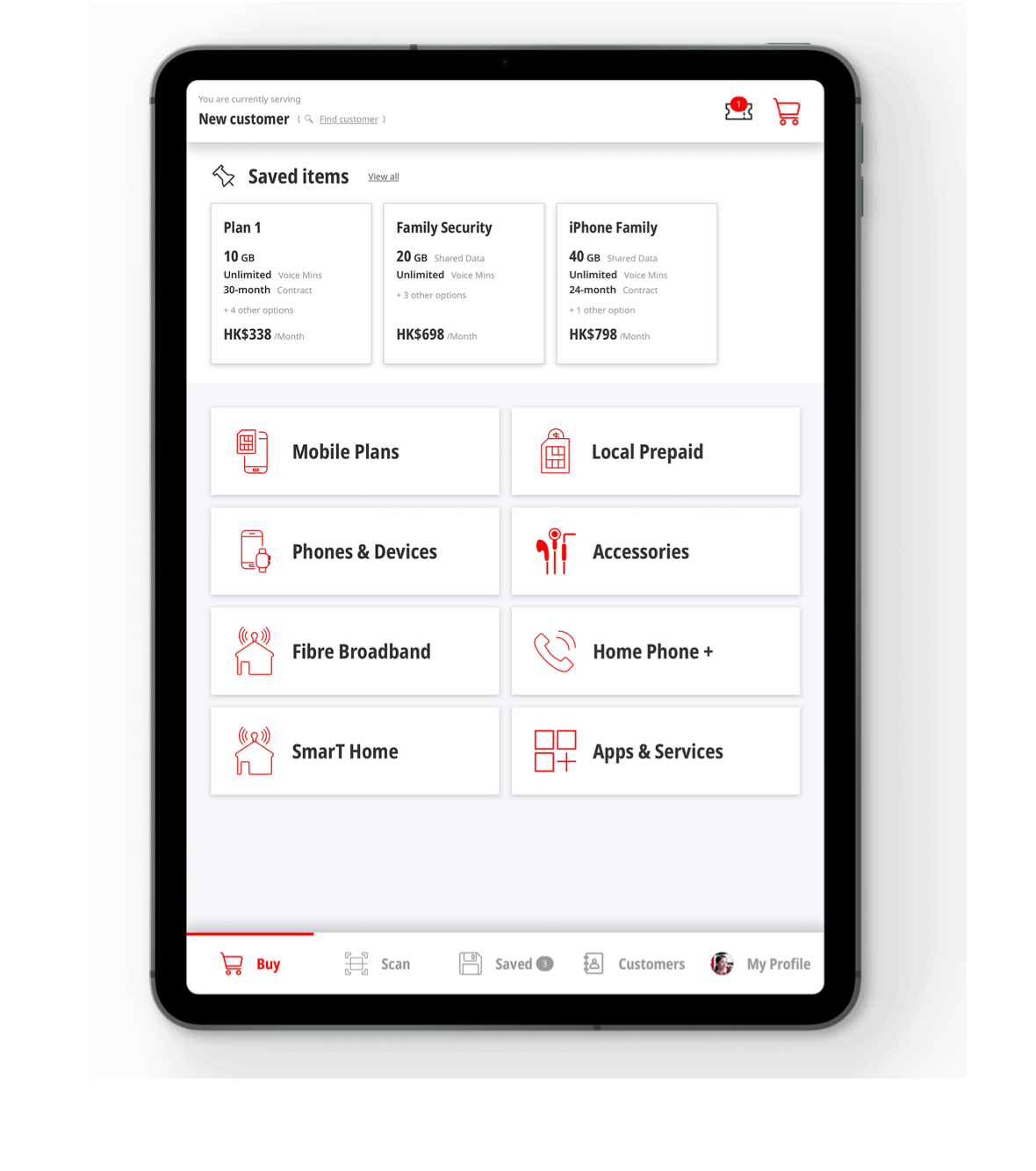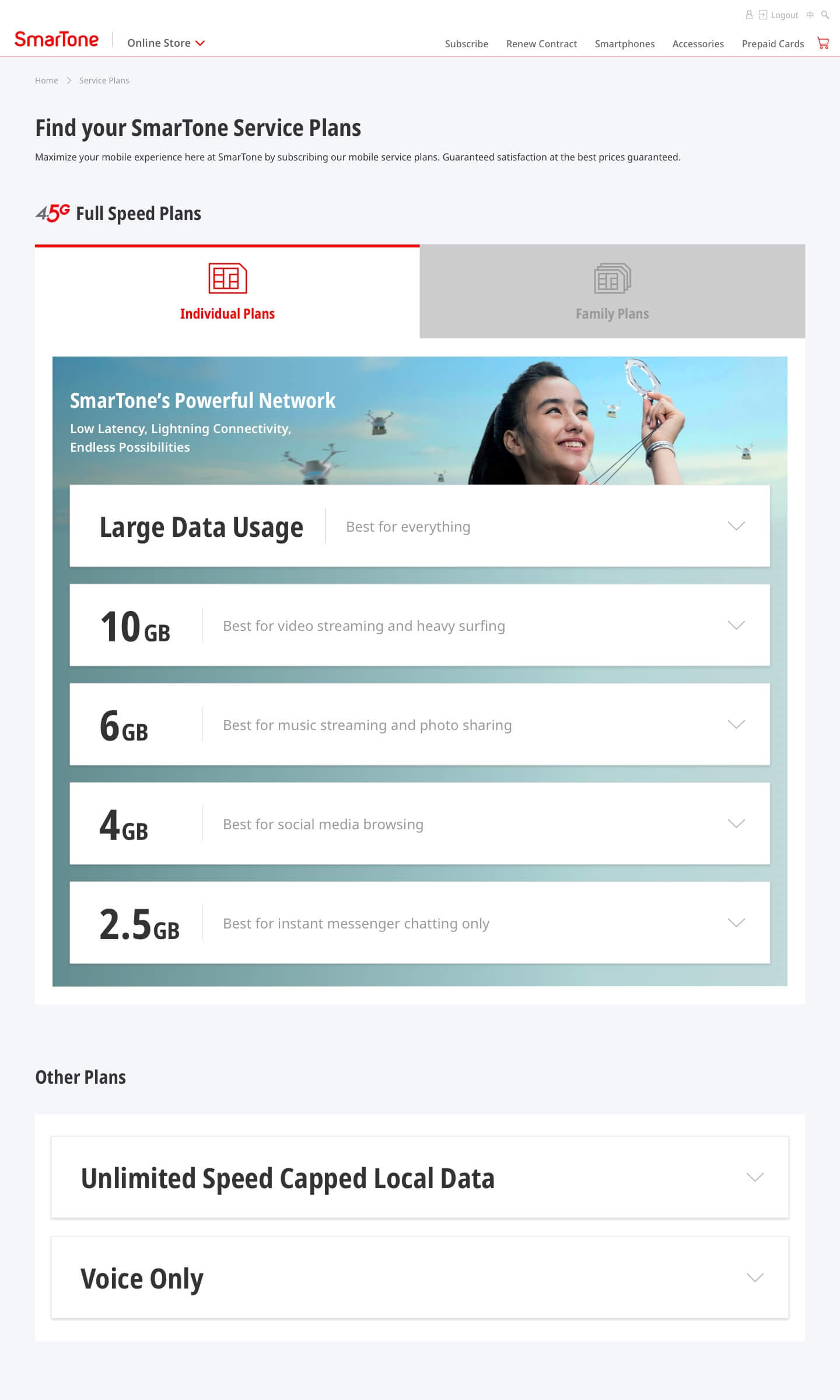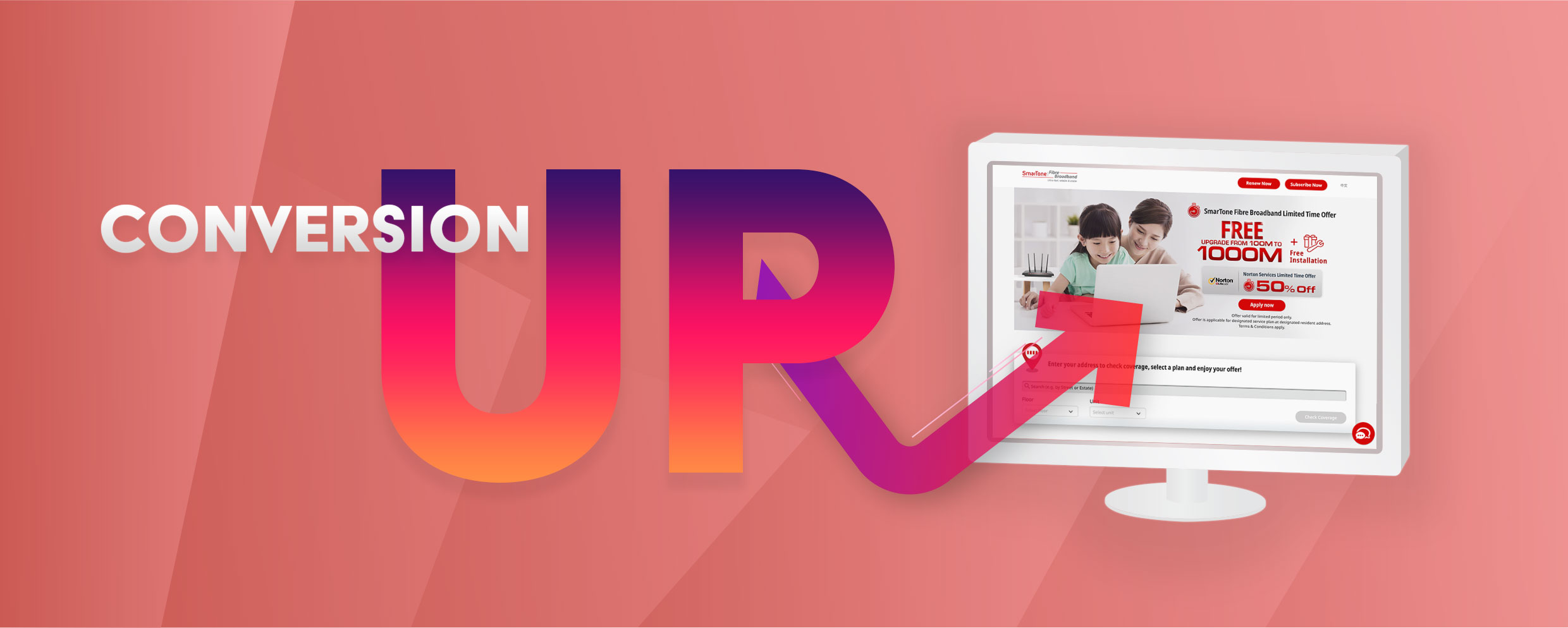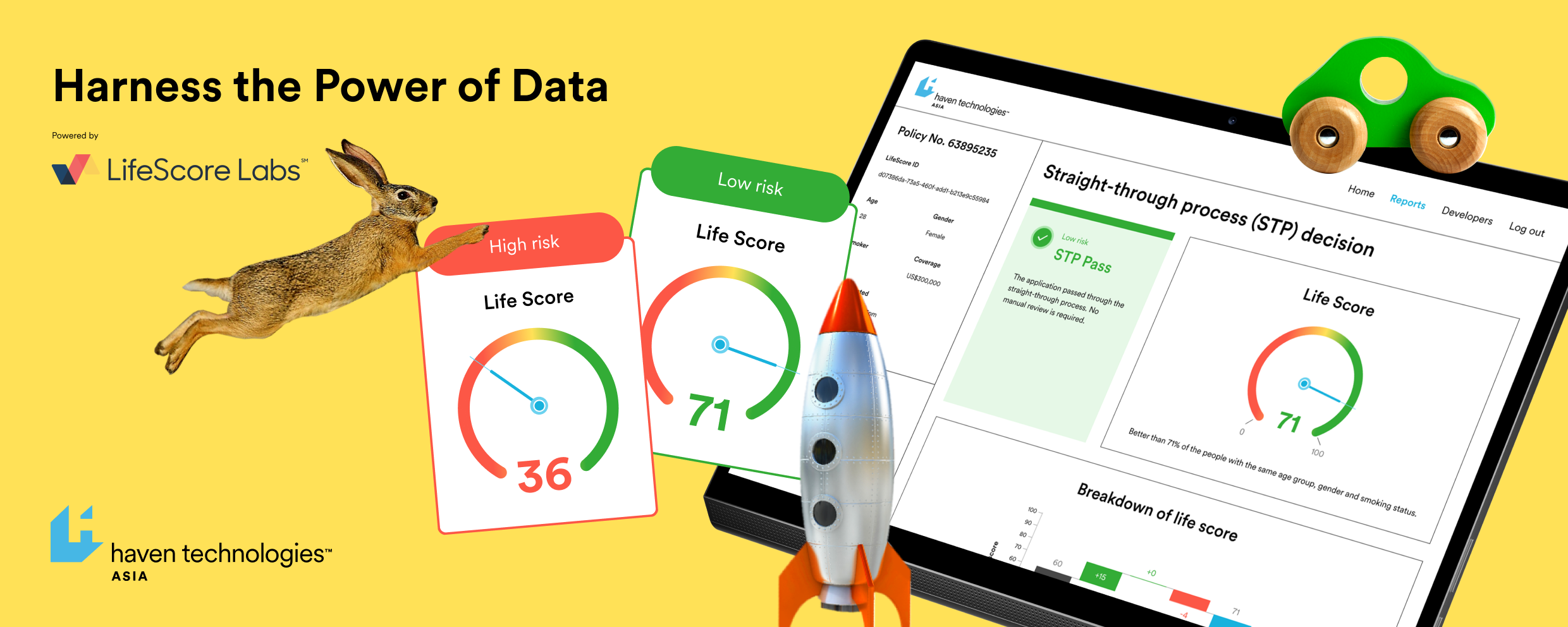All works
Rethinking the telco sales flow
Rethinking the telco sales flow
Bridging SmarTone’s online and offline customer experience
September 2019 - January 2020 | Internal system | CRM | Product discover, customer journey mapping
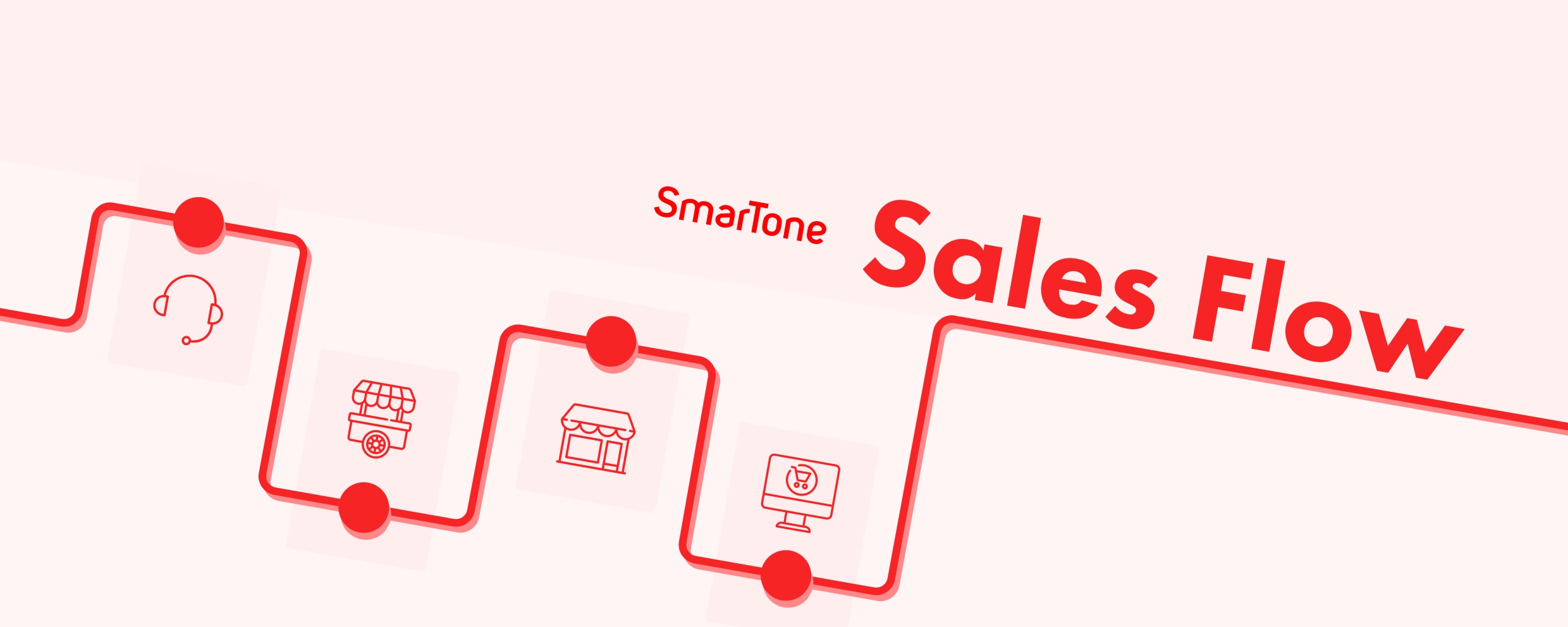

Background of the project
In 2019, SmarTone bought a new product modeling system in a bid to replace their existing sales panels that required extra development resources for launch new products. The end goal was to create a unified, omnichannel sales flow for retail stores, kiosks, telesales, and online store that could help bridge their online and offline customer experience.
About SmarTone
Who did I work for?
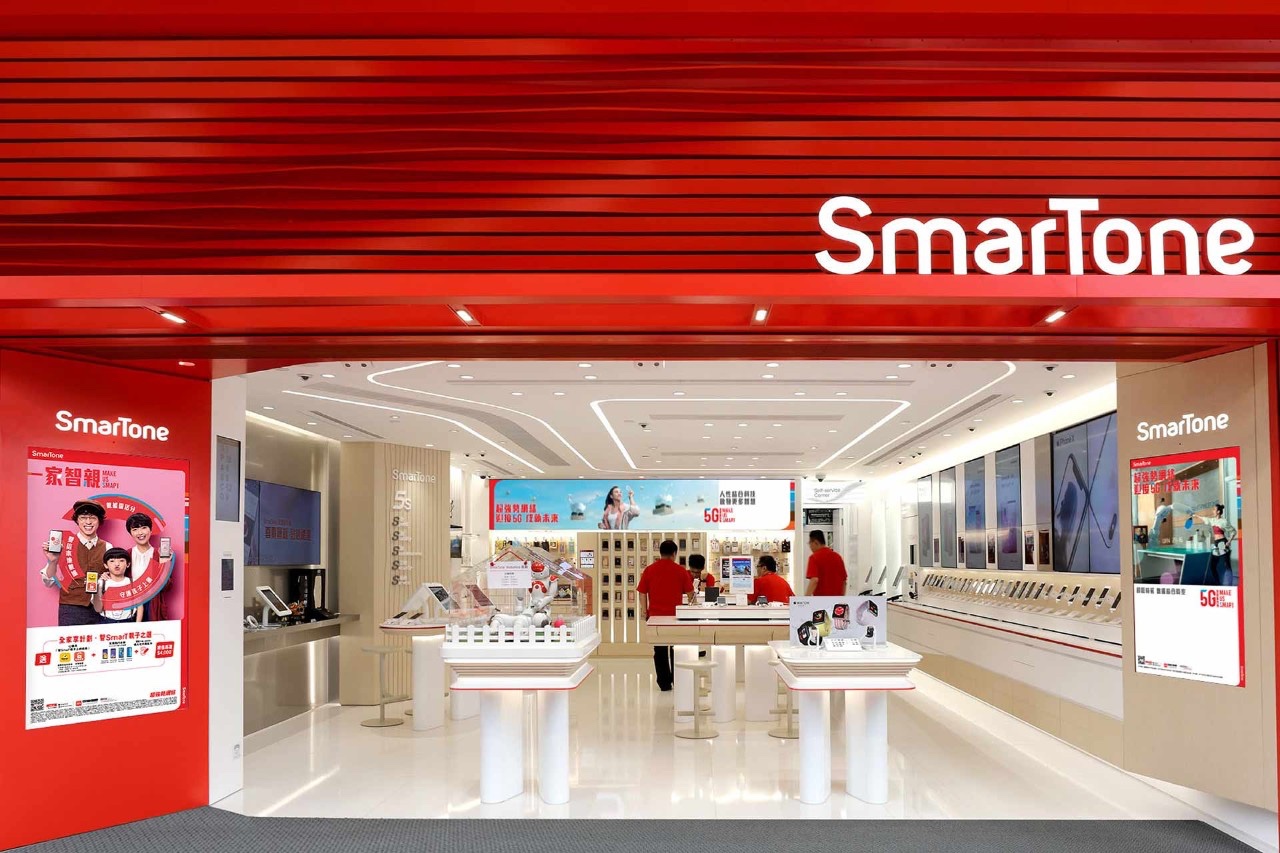
SmarTone is a leading telecommunications company in Hong Kong. SmarTone offers mobile tariff plans, home broadband, landlines and other related services. I was hired as Senior UX designer by SmarTone from 2018 to 2020, focusing on improving the conversion rates of SmarTone’s online store and online subscription.
My role in this project
Principal UX designer
I was the principal UX designer assigned to lead the product discovery phase so the product requirement could be formulated for the new sales flow. As the first digital project in SmarTone to adopt qualitative research methods including user interview and customer journey mapping, I was in charge of planning and executing the research fieldwork and stakeholders’ workshops. At the same time, I worked with system analysts and developers from the system provider to understand the technical capabilities and constraints. As the requirement became clearer, a prototype was built out of collaboration among 2 UI designers and me.
How did I approch?
It was a mess when I started. There were 3 different sales systems respectively for SmarTone’s kiosks, retail stores and online store.
3 systems, 3 departments
In SmarTone, there were 3 different sales systems developed by different departments. A key goal of this project was to unify the 3 systems into one so that the process for new product and service launch could be optimized.
Out of these 3 systems, our team was only in charge of the development and maintenance in the past. There was thus a need to get familiar with the other 2 systems.
Out of these 3 systems, our team was only in charge of the development and maintenance in the past. There was thus a need to get familiar with the other 2 systems.
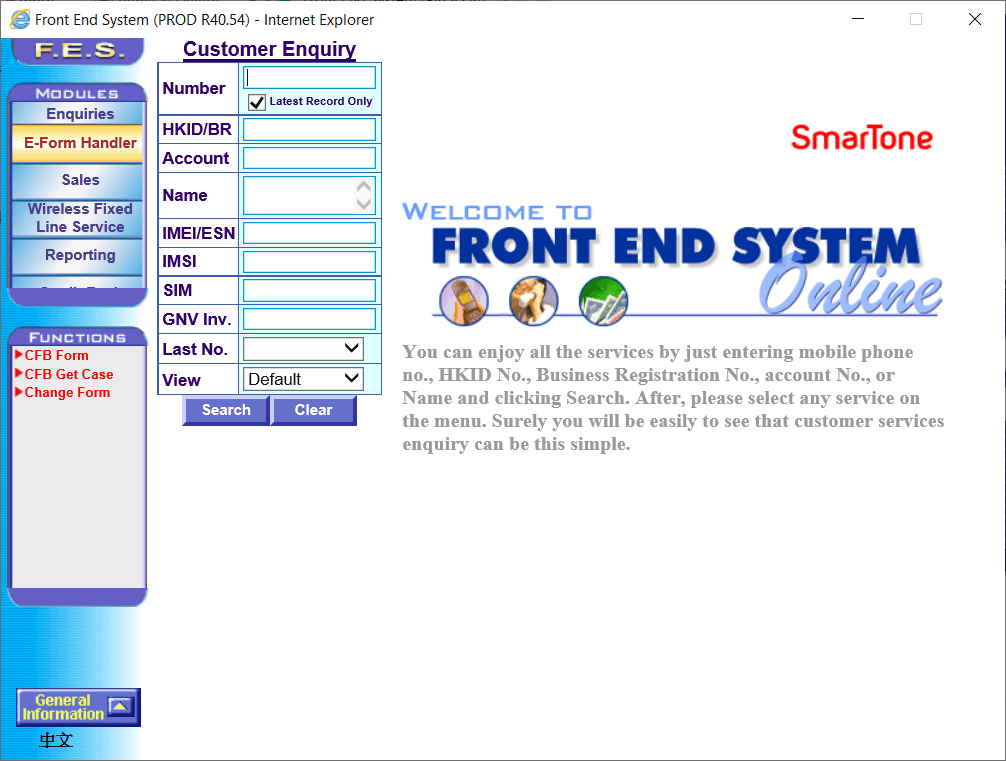
SmarTone’s front end system
Developed by the Information Services Division, front end system was used by salespeople at retail stores and telesales center for looking up customers, closing sales deals and managing sales records.
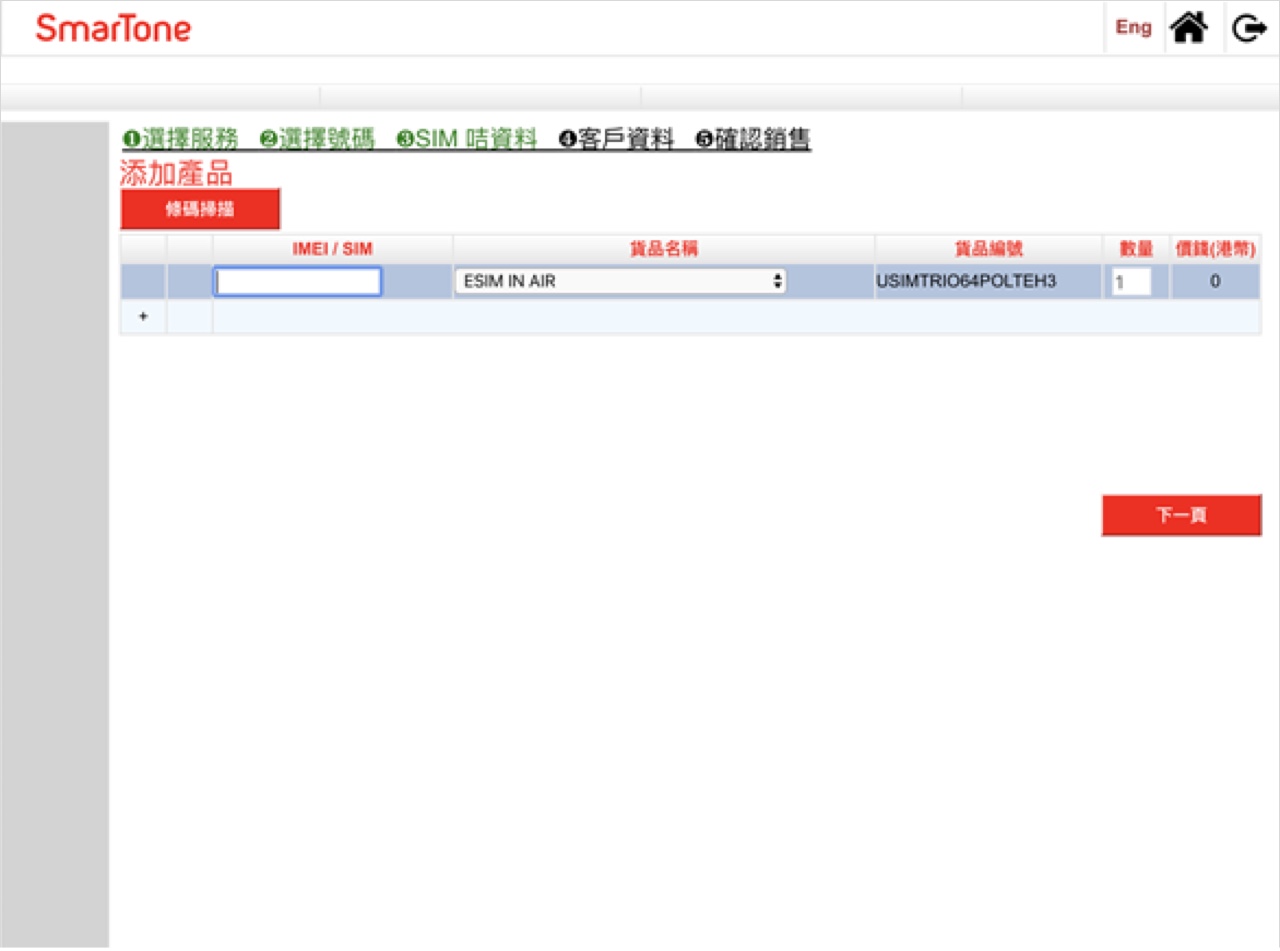
SmarTone’s direct sales app
Developed by another team of the Information Services Division on request by the Direct Sales team, this iPad app aimed to replace the front end system as the sole sales tool for salespeople working at kiosks.
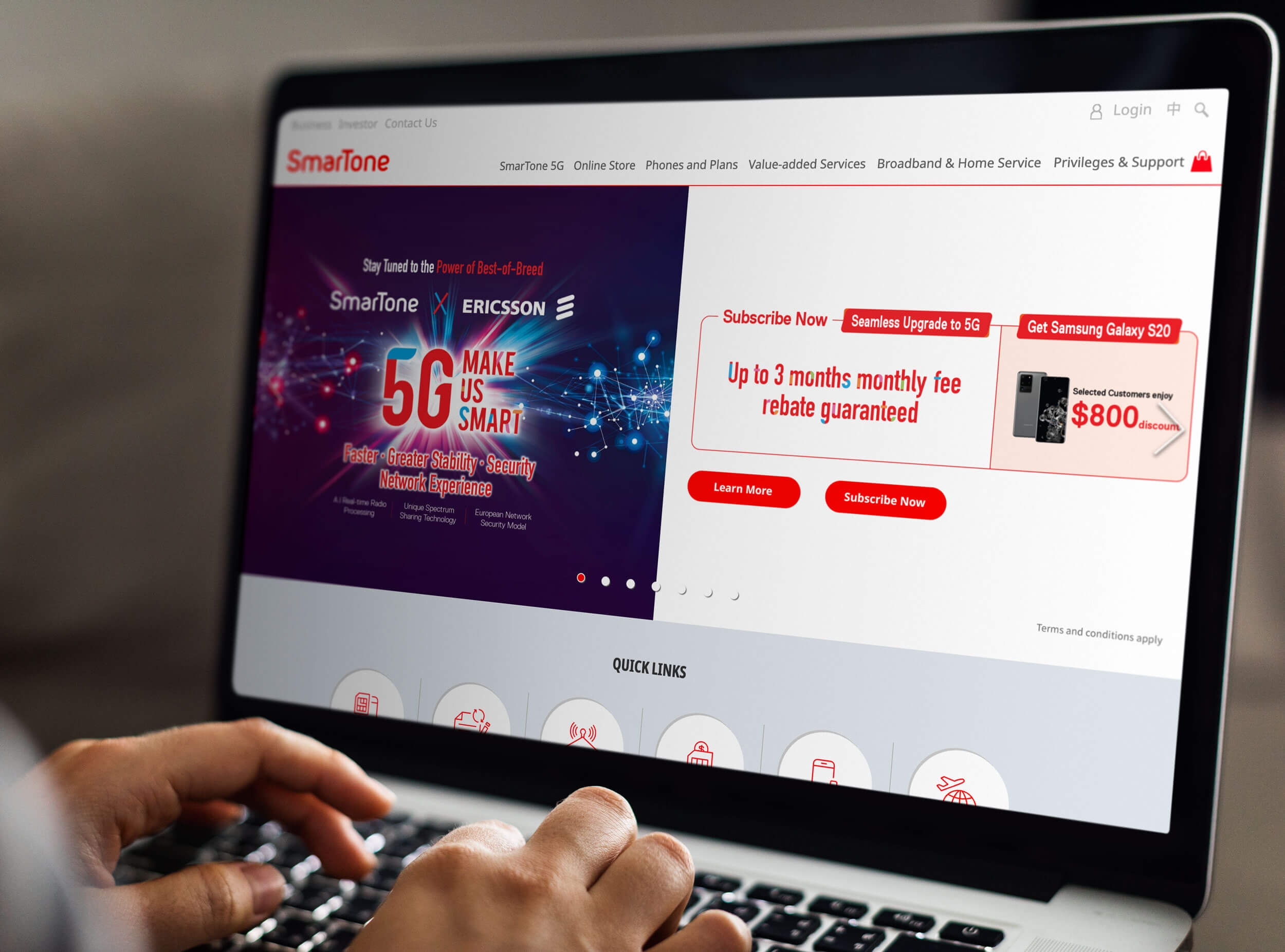
SmarTone’s corporate website (online store)
Developed by the Digital and e-Commerce Division, a.k.a. my department, this website sold products and services online. I had been working on this since I joined SmarTone.
To understand how these sales systems had been used, focus groups and store visits were organized.
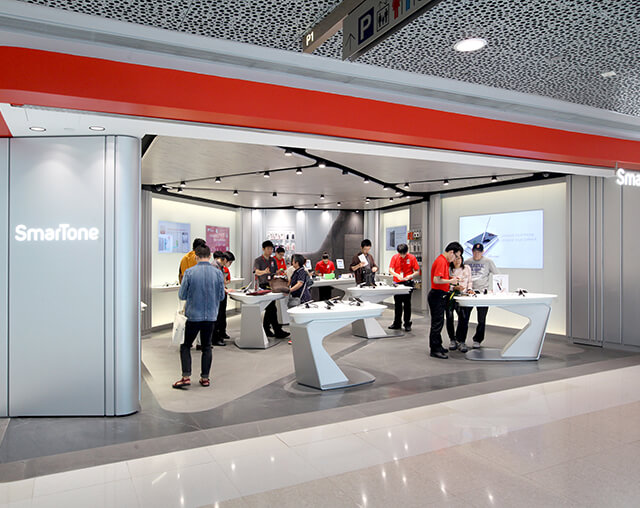
Our team visited SmarTone’s retail store at IFC Mall, Central, Hong Kong in September 2019. (Photo was not taken on the date of the visit.)
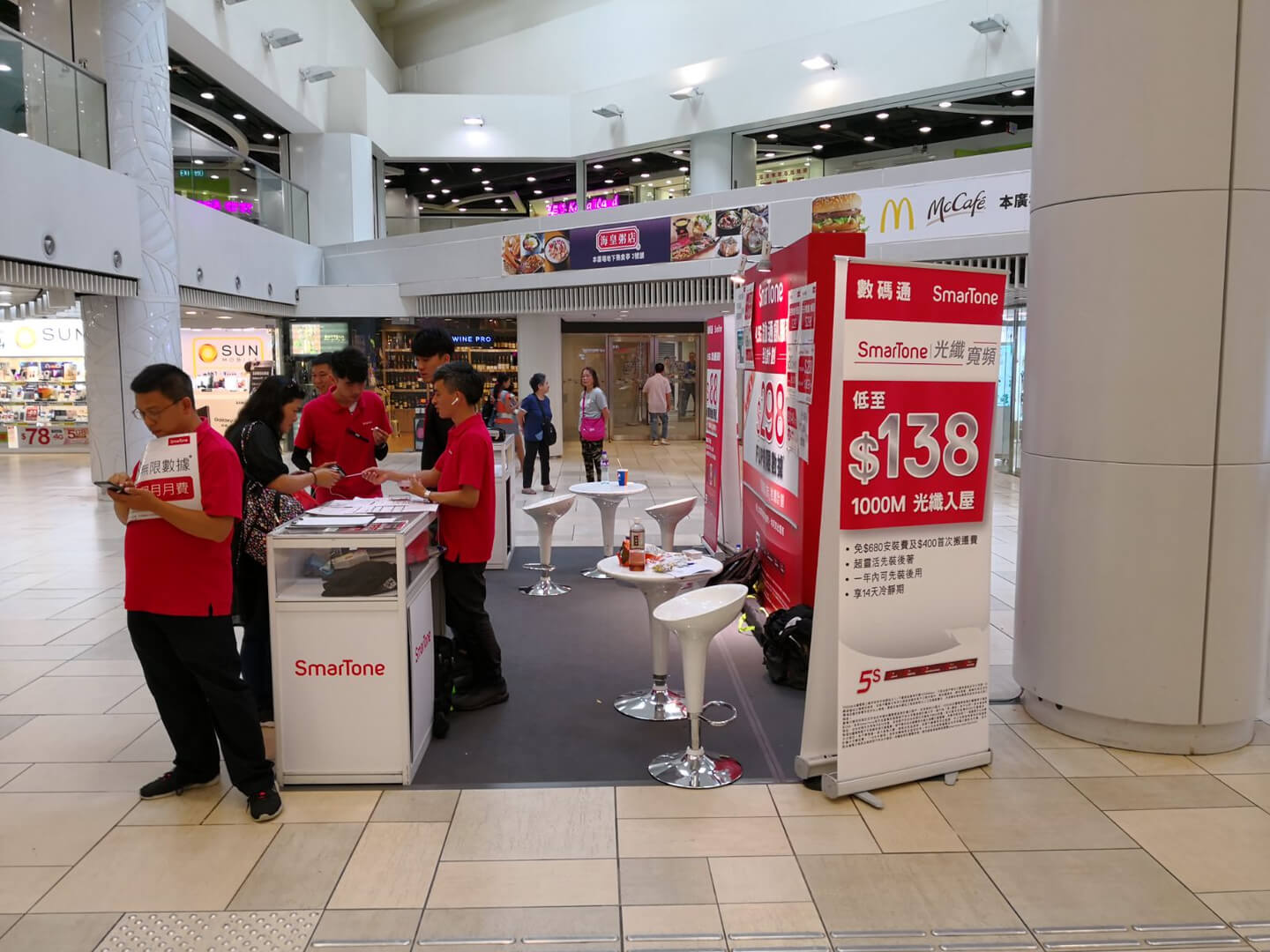
Assisted by the Information Services Division, we had focus group sessions to talk with salespeople working at kiosks. (Photo was taken at a SmarTone’s kiosk. It did not record the situation of the focus group sessions.)
Salespeople complained about their difficulty in managing the systems for locating a particular product and the steep learning curve for newbies to master the process.
They hoped the new system could help them make more deals.
But how could this be done? It lies in our customers.
To identify customers’ needs, I proposed to map out their customer journeys.
Recruiting the right users for user interview was a challenge for me as there were so many different ways to segment the users, by interests, by generation, by tech savviness, by channels, by products and the like.
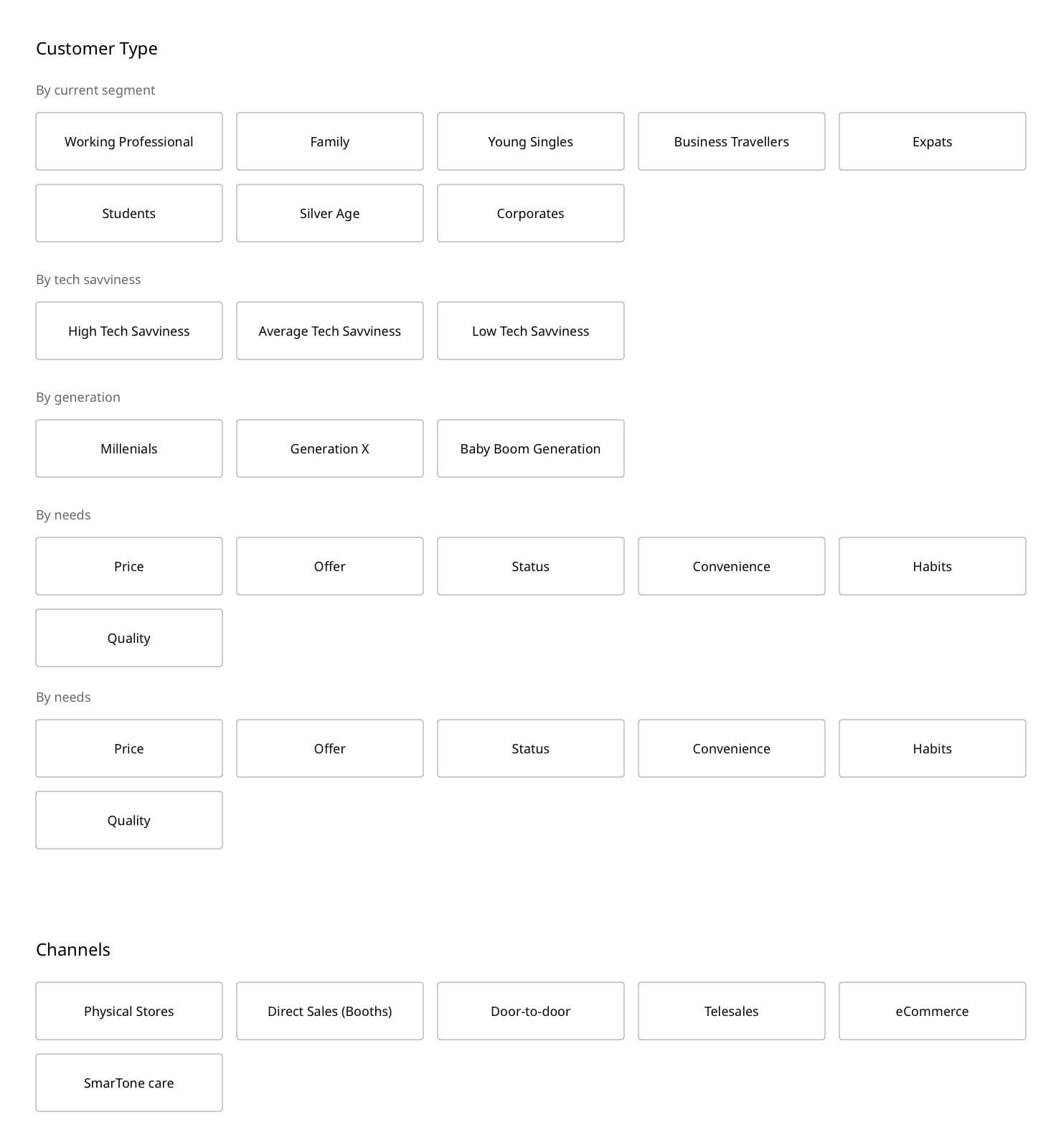
Customer matrix I created to help me categorize customers.
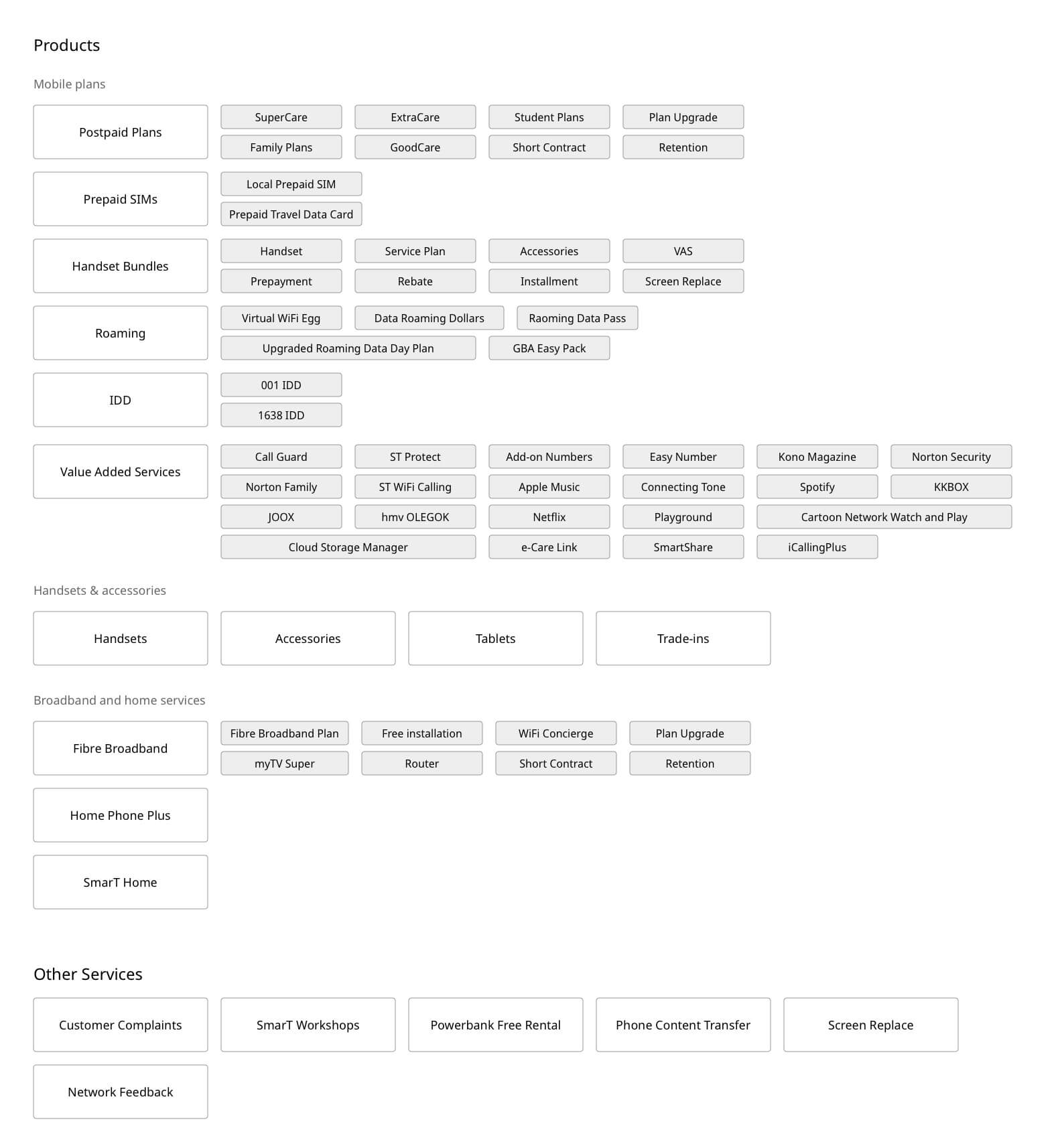
SmarTone’s products and services list. SmarTone offered a wide range of products and services and this presented a scoping problem for our research.
After internal discussion, we decided to categorize our customers based on the customer segments proposed by the Customers Relation Development Division. To gather more information on the customers’ use of the different channels, I further categorized the segmented customers by their final channel used.
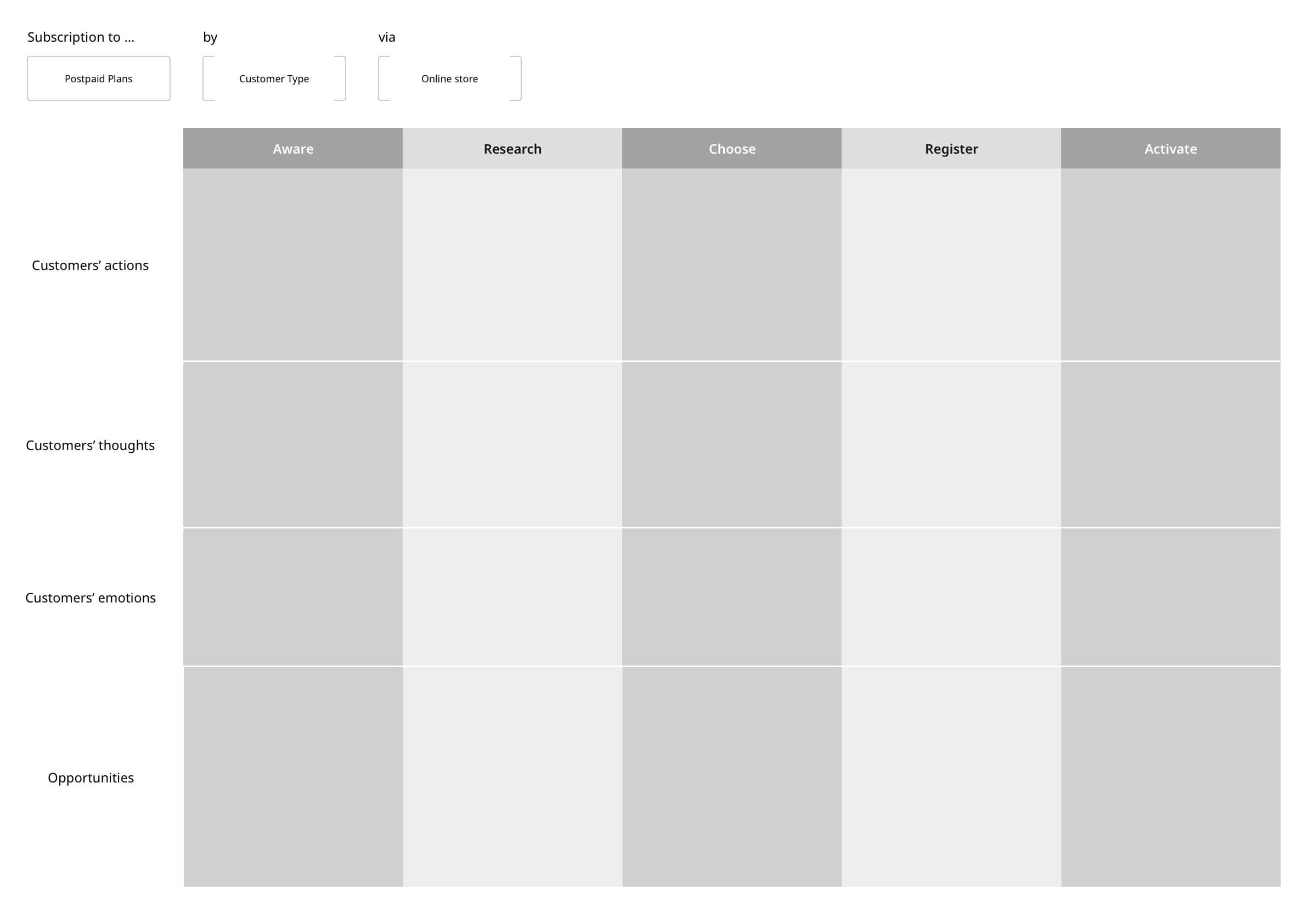
I created this journey template to help me map out the customer journey of a particular segment when they subscribe a service using a particular channel.
SmarTone’s segmentation strategy
In SmarTone, customers were segmented into young working singles, families, students and retirees. The aim of segmentation was to design products and services that could better cater the needs of a particular group of customers.

3 users were recruited for interview for each identified segments.
We grouped the data with affinity diagrams.
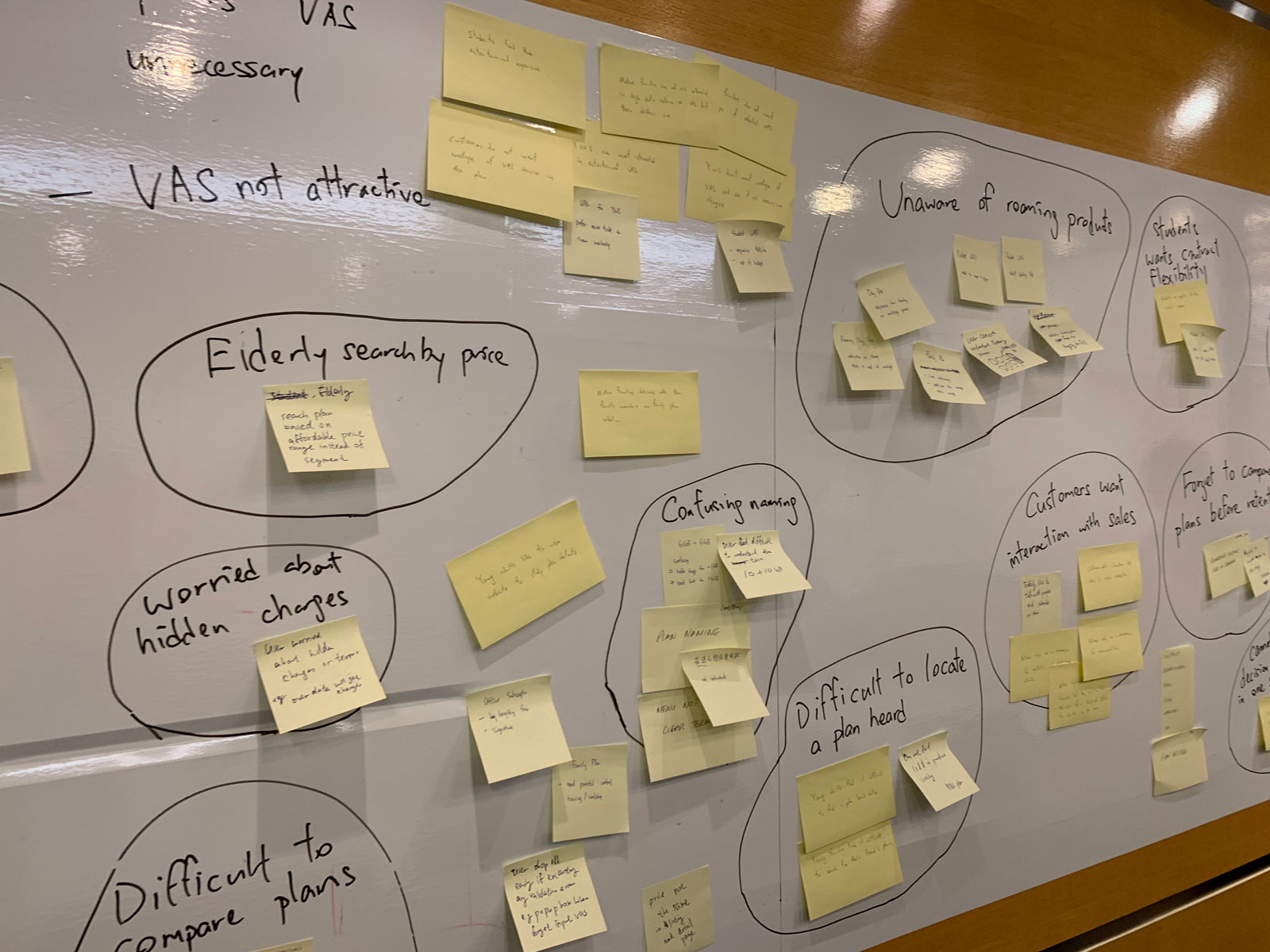
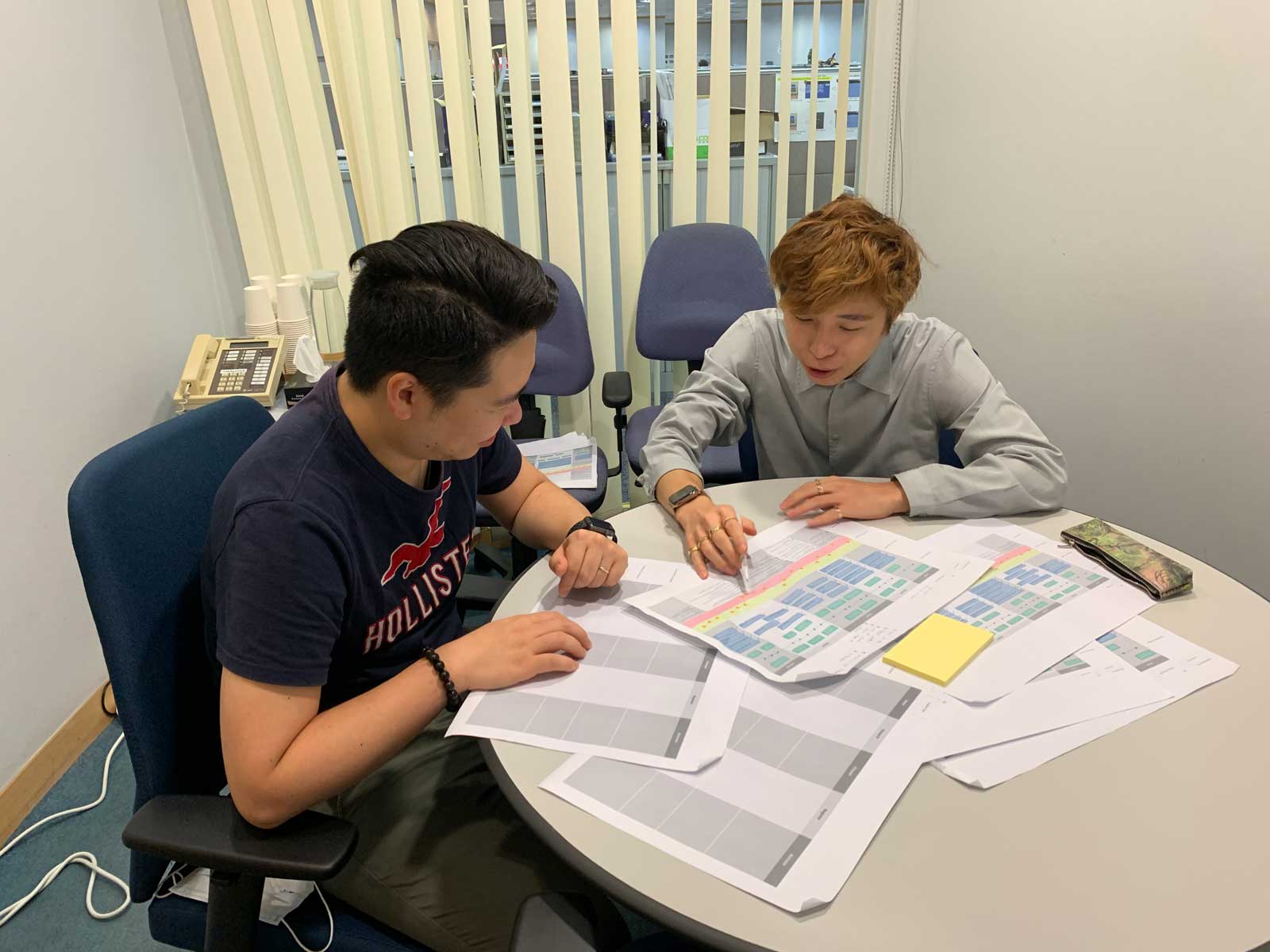
This helped us to fill up the journey maps for different segments.
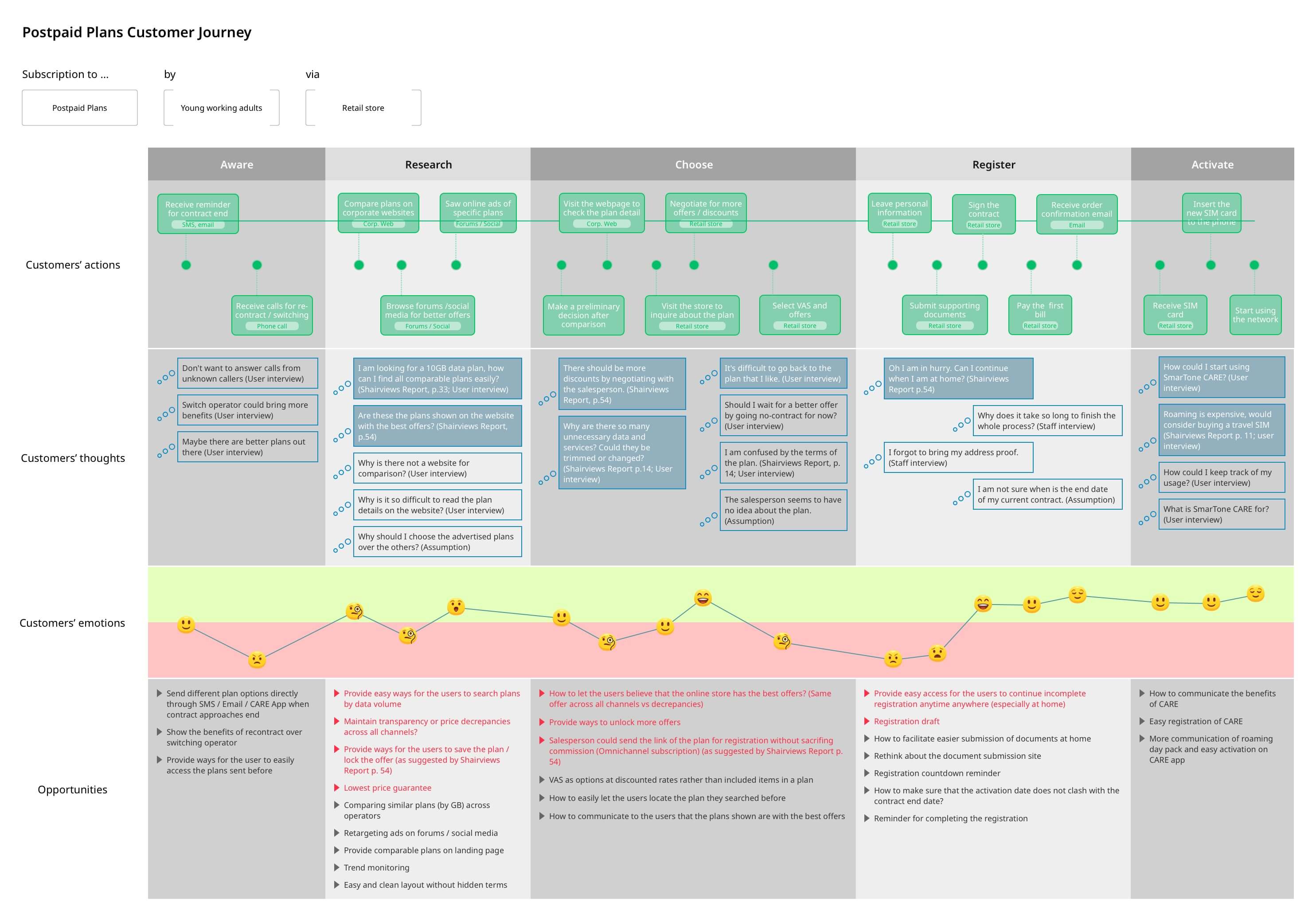
Young working singles’ postpaid mobile tariff plan customer journey (retail store).
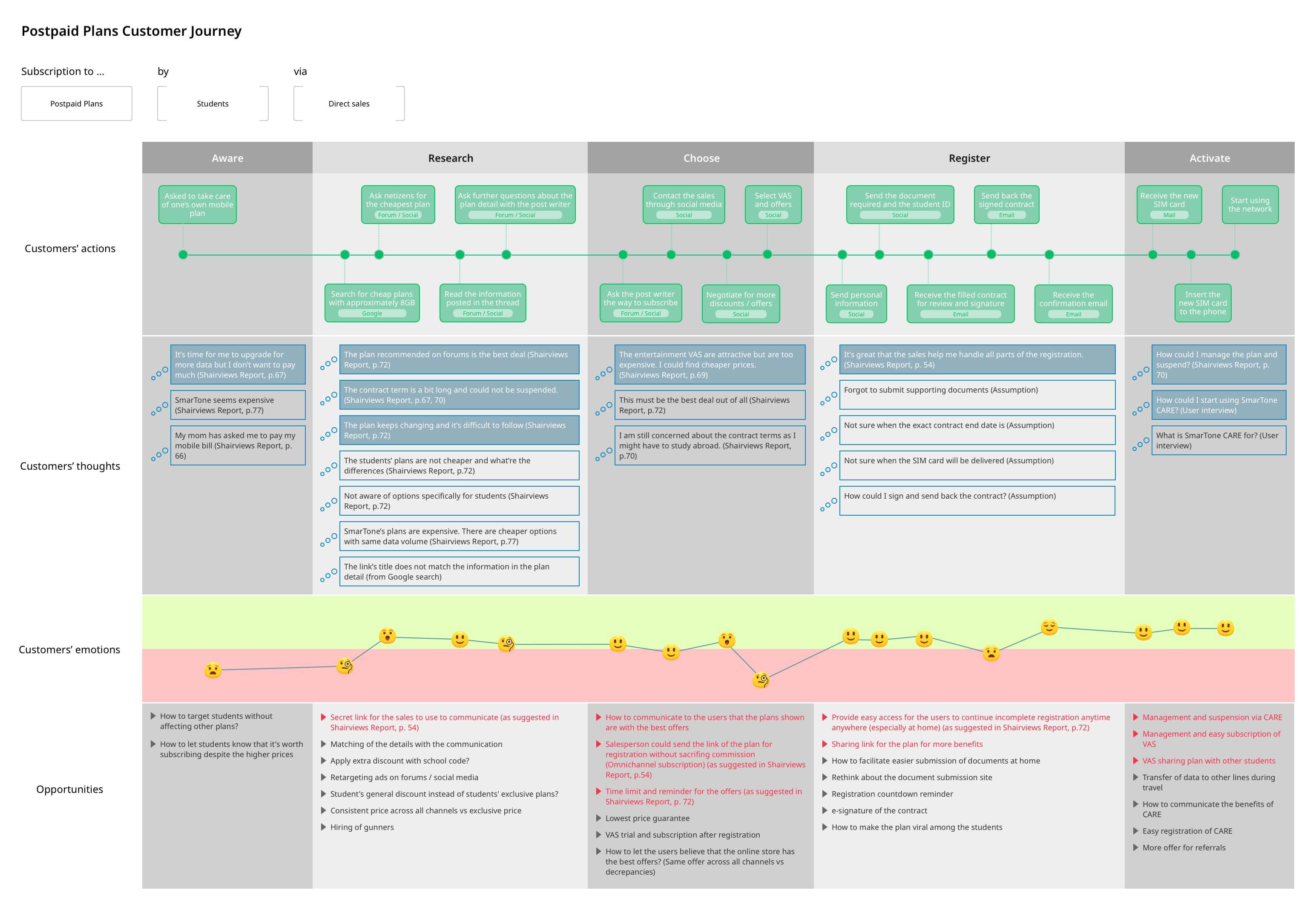
Students’ postpaid mobile tariff plan customer journey (kiosk sales).
Painpoints and opportunities were prioritised. They were further summarised according to the sales cycle.
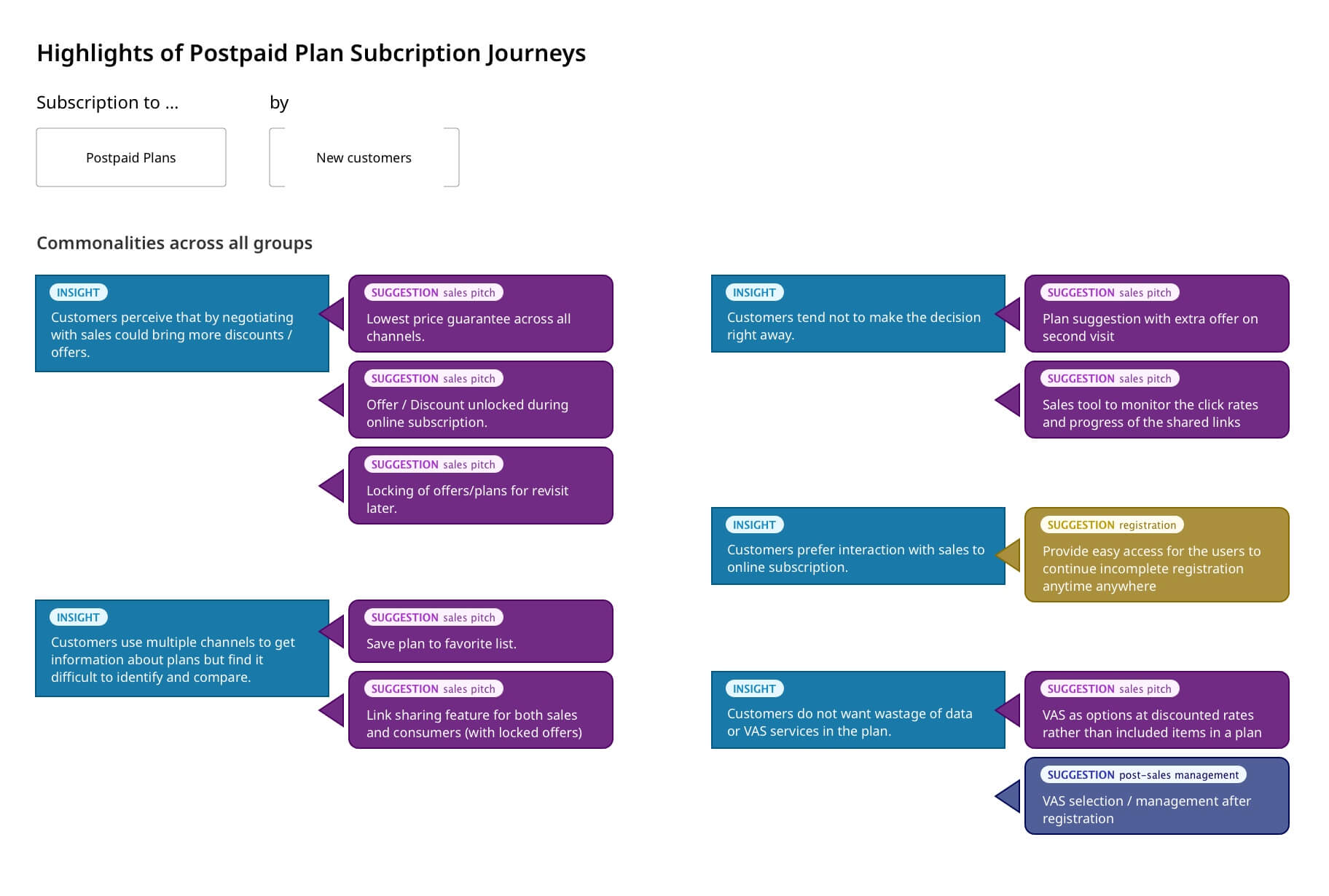
The painpoints and opportunities were regrouped in terms of the stage of sales pitch, customer registration and post-sales management. This categorization could help us visualise what could be done to help salespeople in the three stages.
Some of the painpoints and opportunities were specific for particular segments.
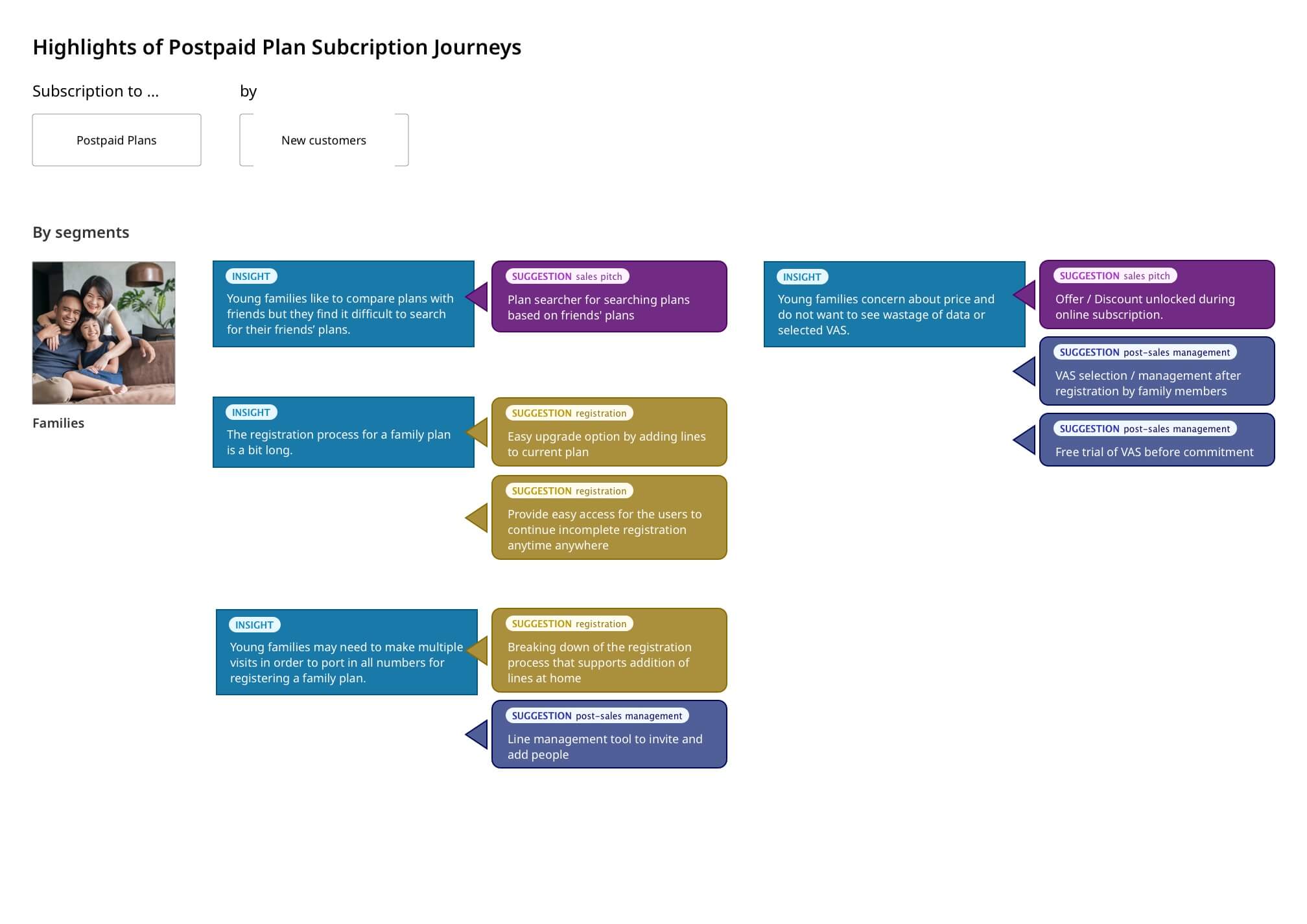
Presenting your findings from jouney mapping
Not everyone is interested in going into detail of a long journey. This was particularly the case in SmarTone. To make the pitch effective, I reshuffled the order of the pitch deck to show the suggestions by their sales stage before going through the entire journey maps. This helped draw the attention of the time-strapped top executives by showing them the suggested action items. The journey maps served instead as a support if the executives were interested in knowing how the suggestions were derived.
The findings informed how the new sales flow should be like. These were then demonstrated in interactive two prototypes, one for the website, one for the salespeople.
The outcome
A new sales flow was proposed.
This could be demonstrated in following 2 prototypes.
What did we suggest doing?
In the research report, we made a lot of suggestions to tackle the different issues identified in the journey mapping.
in sales pitch
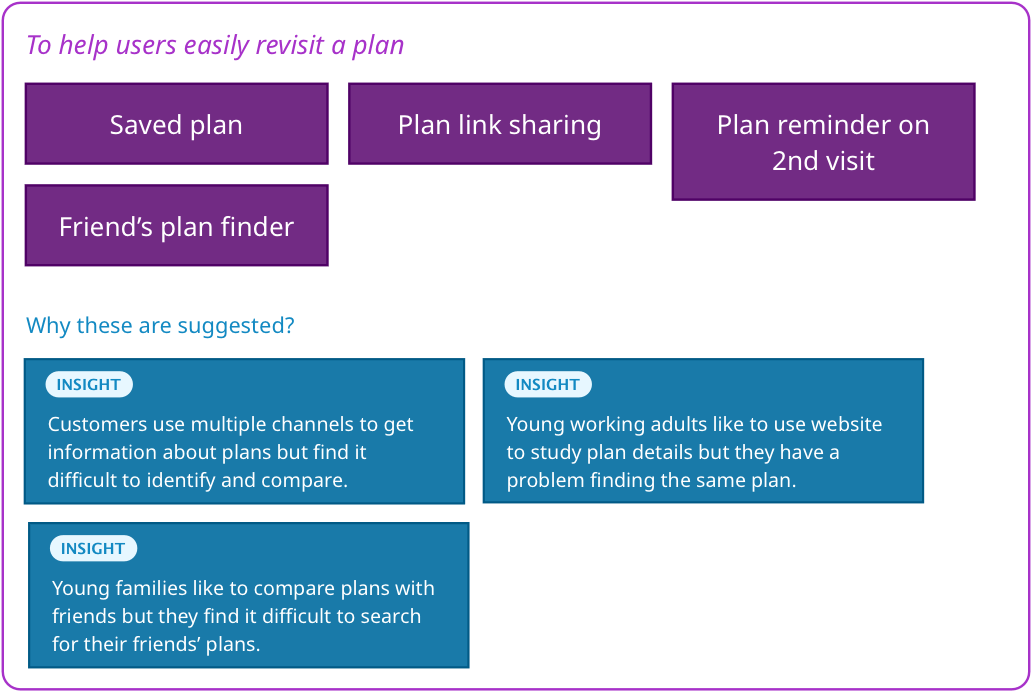
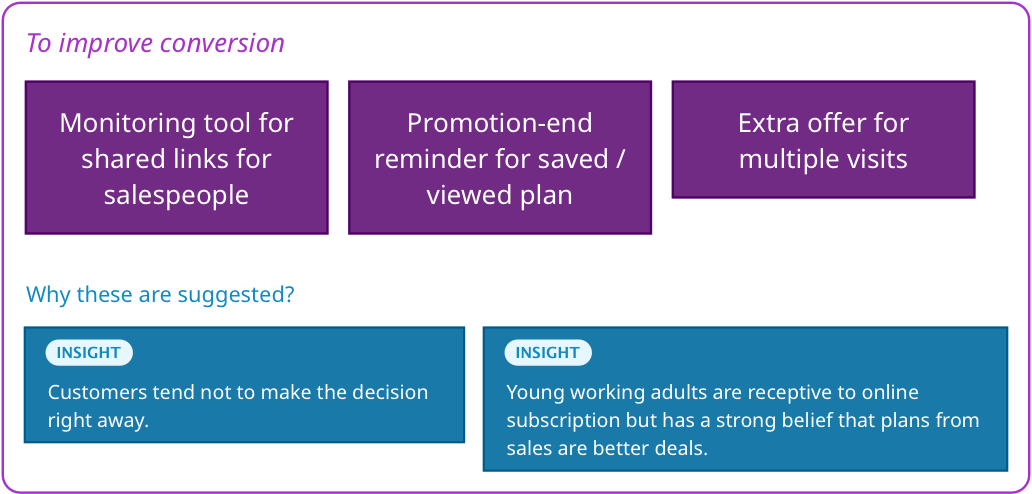
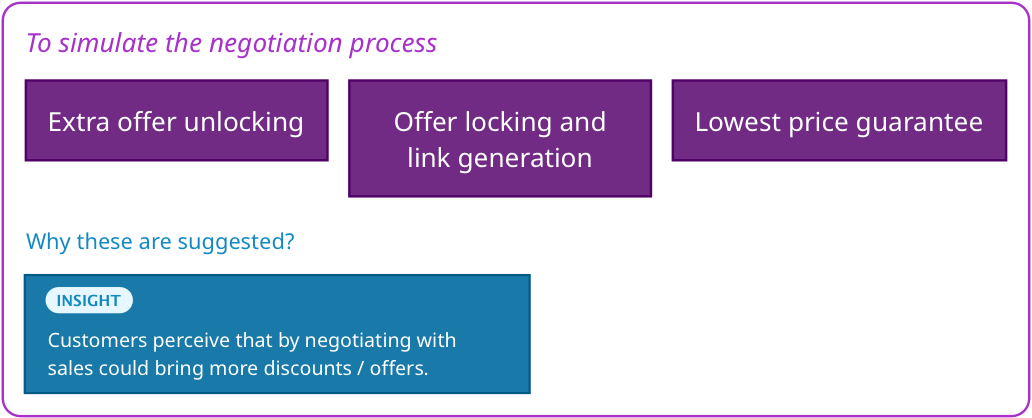

in customer registration
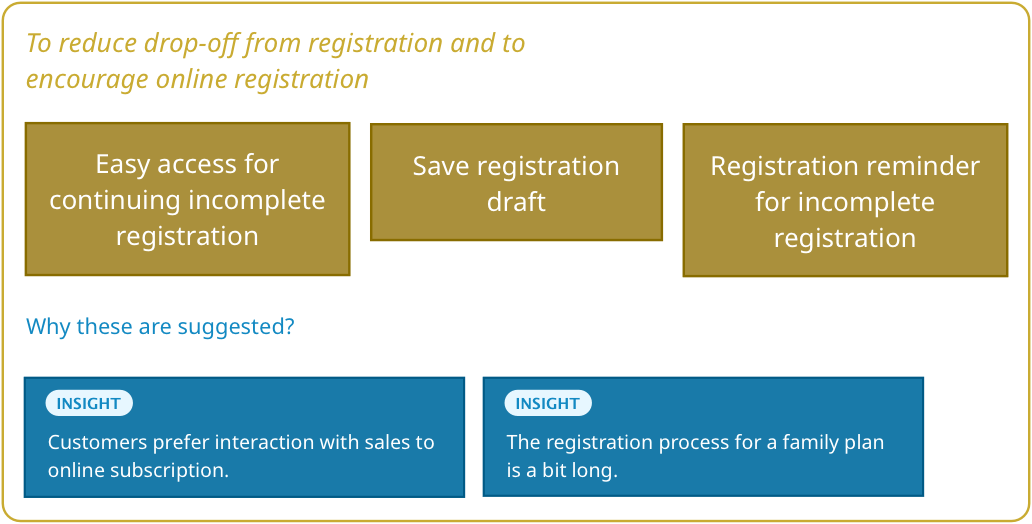
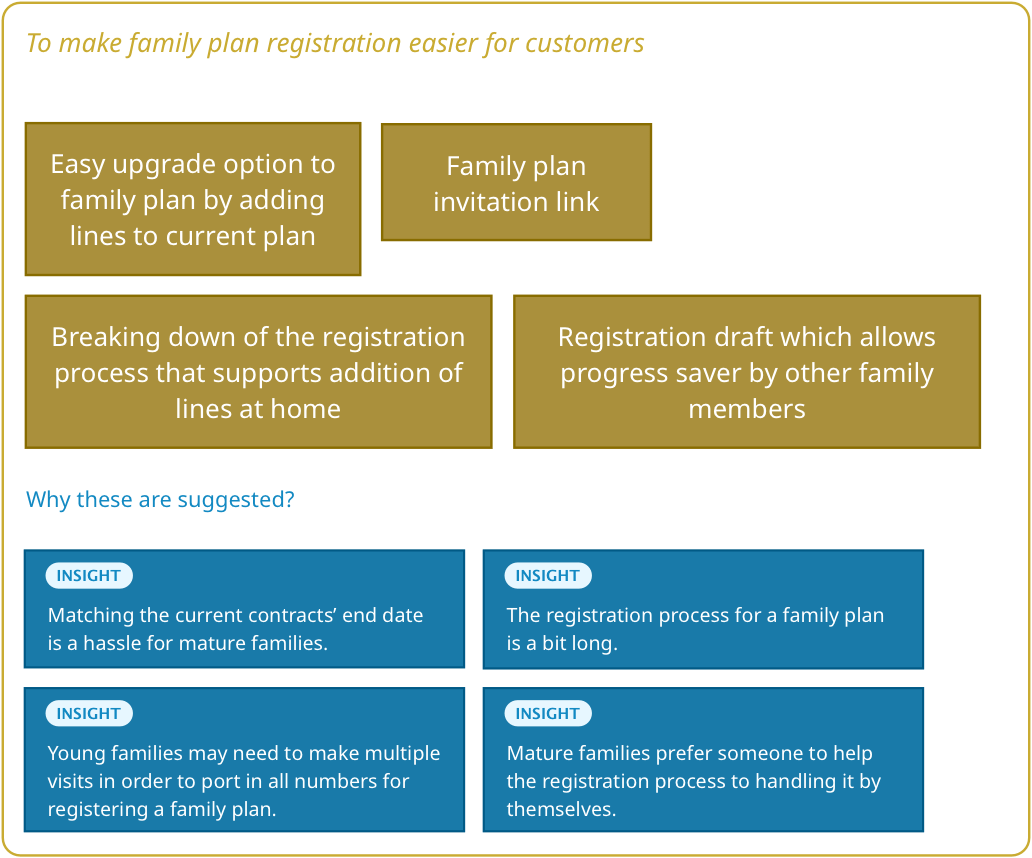
in post sales
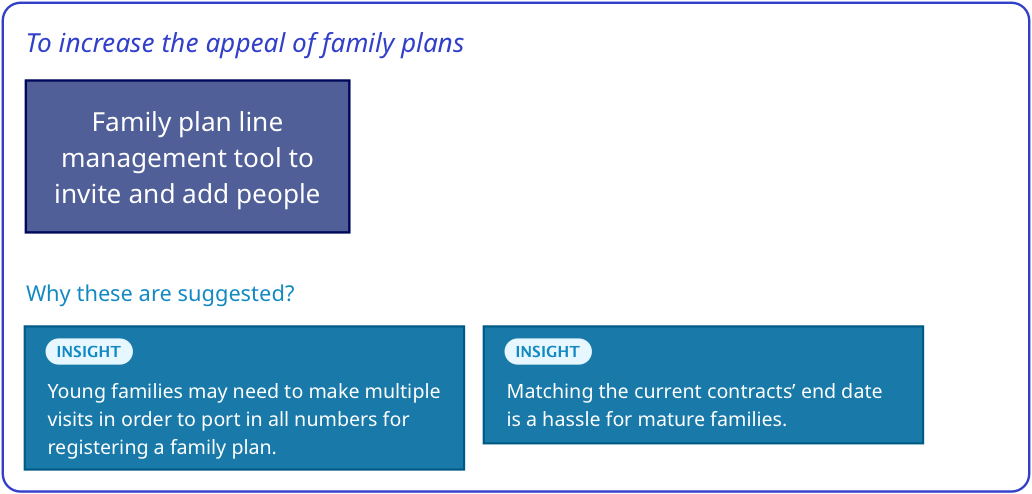
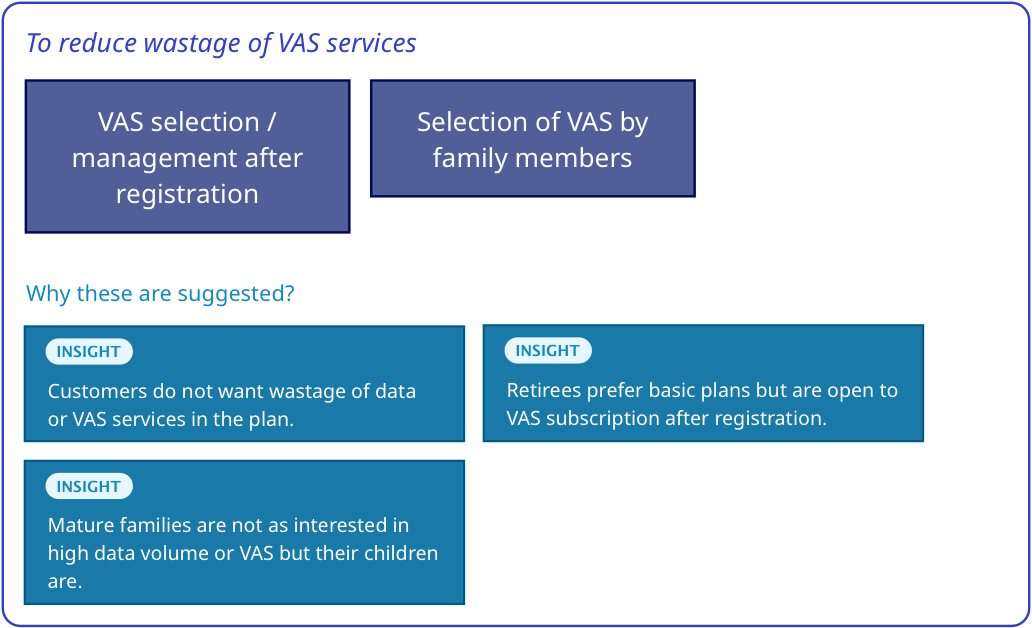
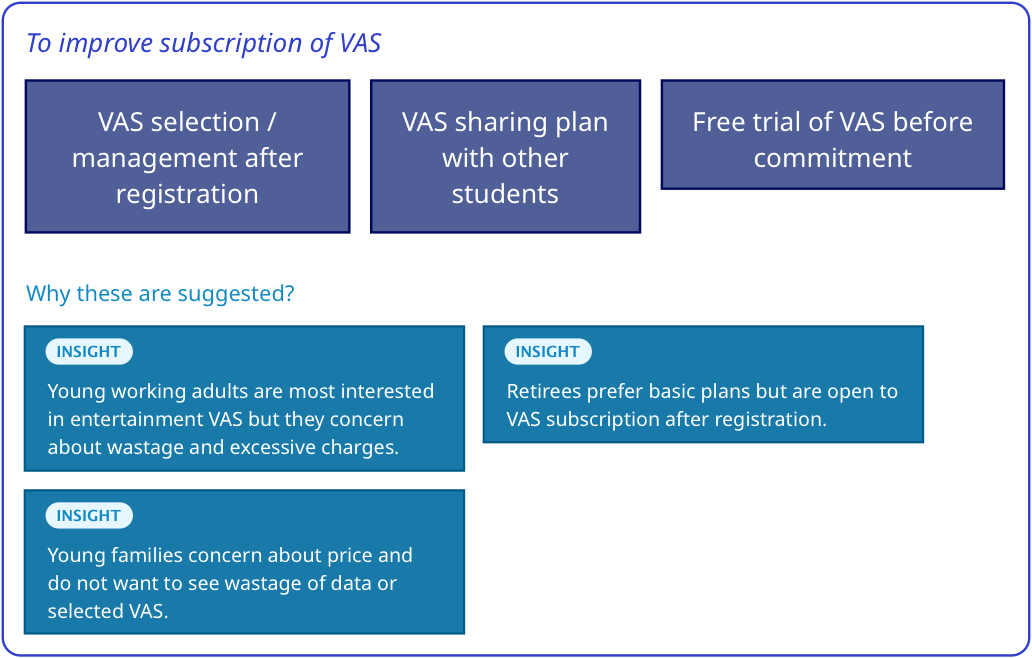
Highlights of the new sales flow include
From online to offline
We observed that the consideration process of a customer tended to be long and back-and-forth. A majority of them started their journey with research on the internet and eventually went to salespeople to finish the deals. The new sales flow aimed to help salespeople in serving these customers.
Saving progress for other channels
Customers on the website could save their progress at any point of their purchase process. They could then use the link or the code generated to continue their progress at retail stores, hotlines or online. From a marketing point of view, this could help us monitor customers’ progress and interest and send them reminders or promotional materials to encourage users to complete the deals.
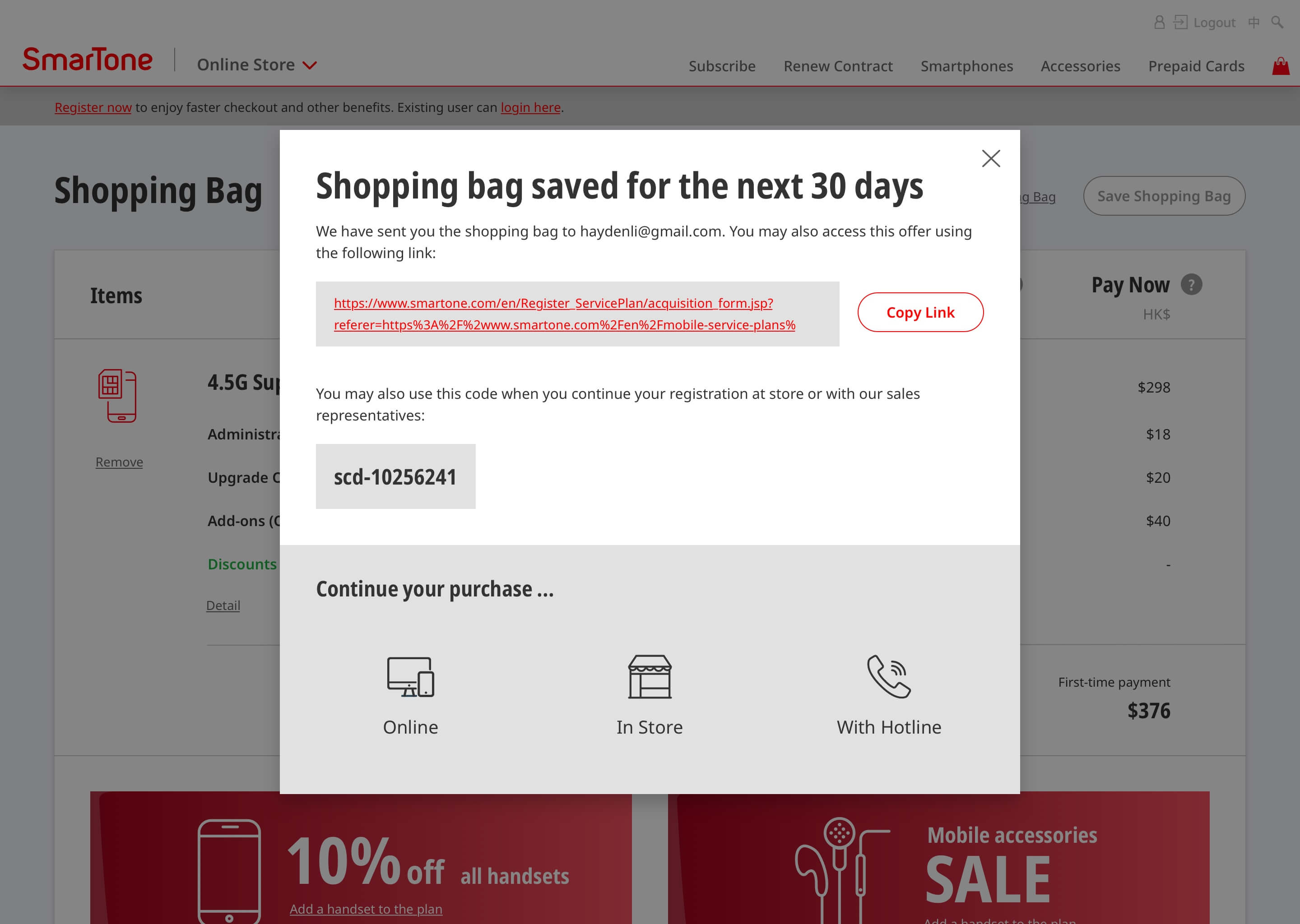
Follow up by salespeople
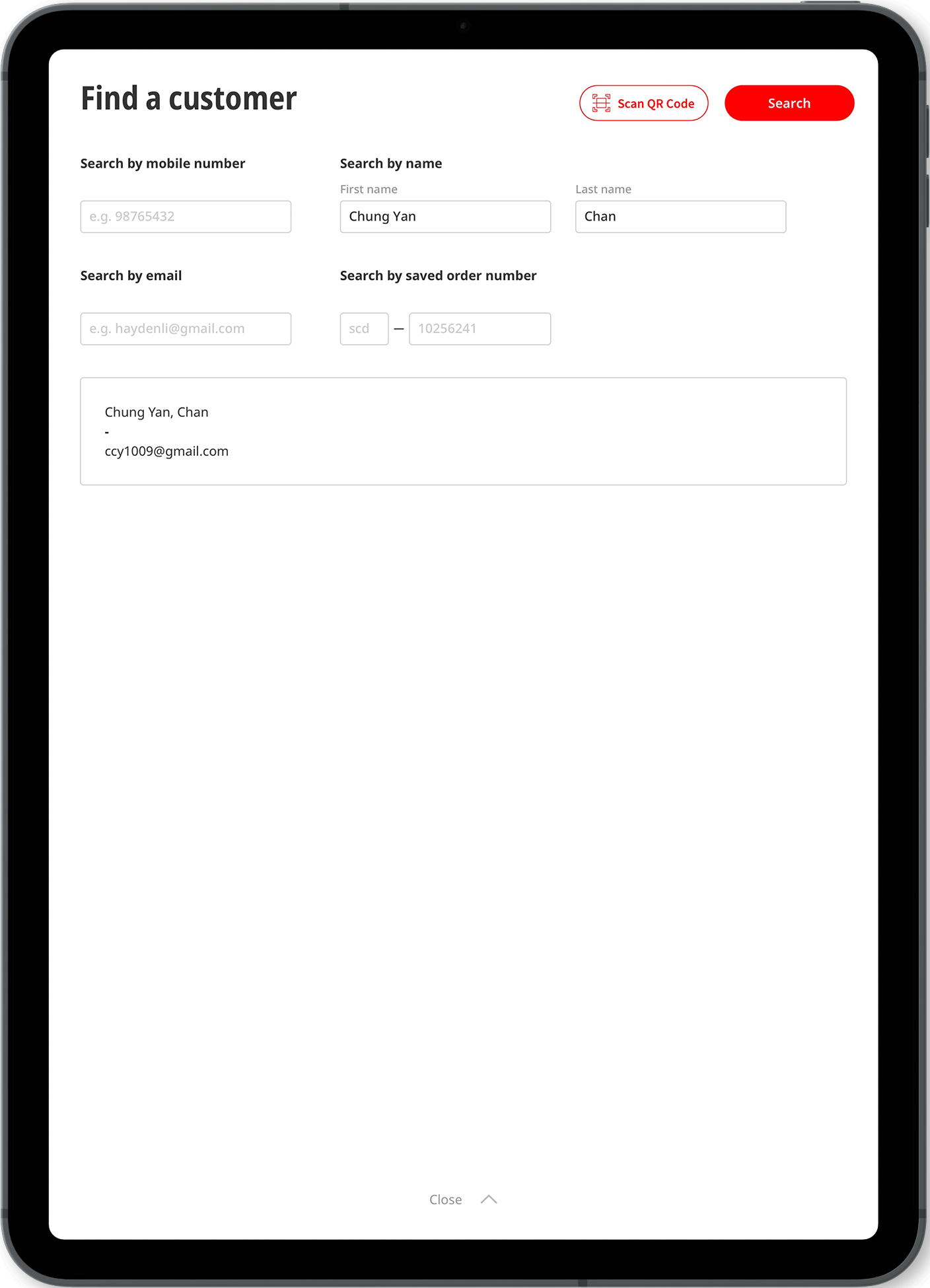
When the customers approach a salesperson, their saved record could be easily traced by searching their email or code generated.
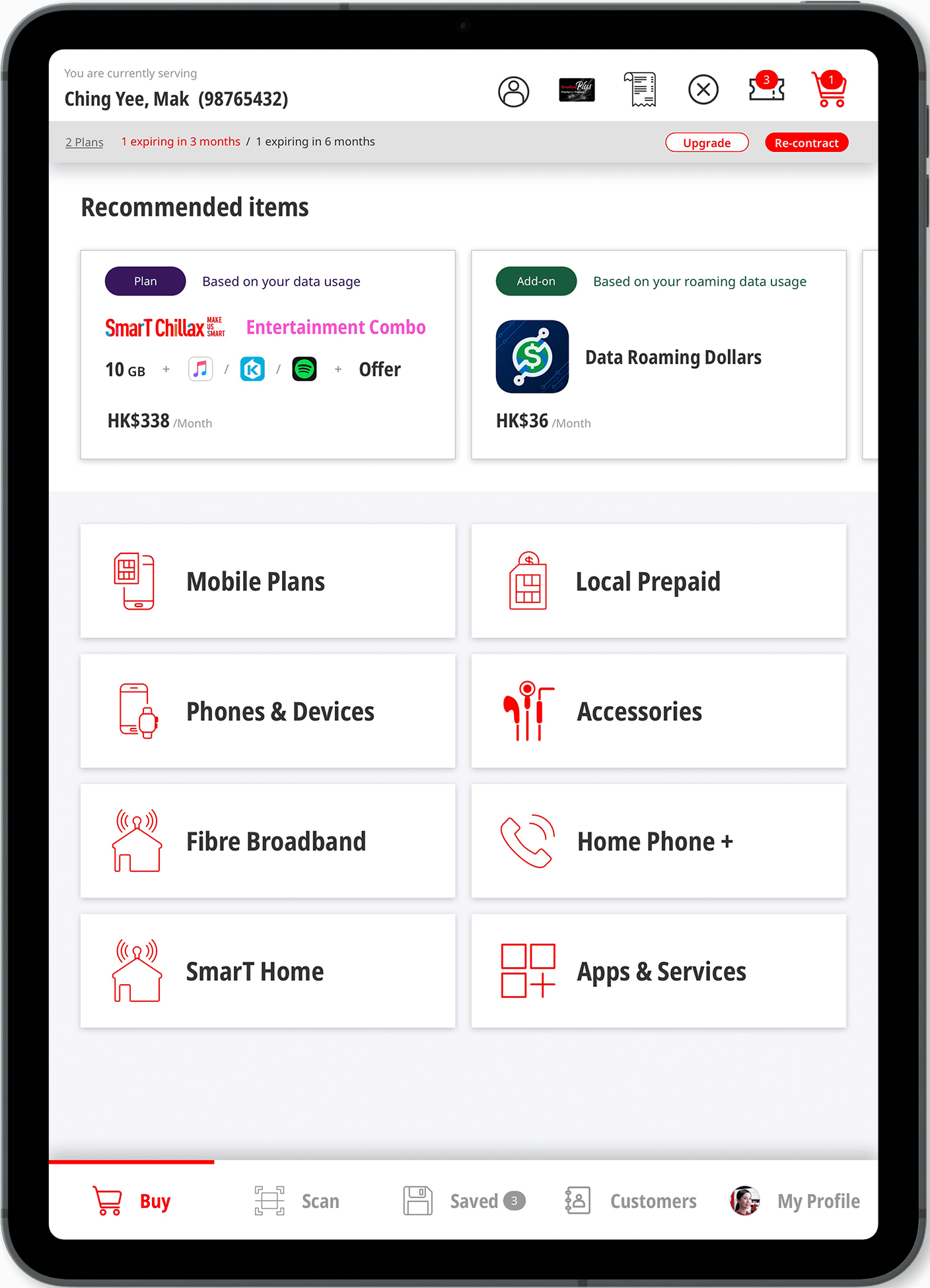
The sales system would then suggest what to do by identify their progress. Customers could easily finish their purchase or registration or contract renewal with the help of the salesperson easily. The system would also recommend services or plans based on the users’ data to help salespeople upsell.
From offline to online
The new systems also facilitated the reverse flow - from offline to online. We were expecting that this new flow could help win back lost customers in the sales process and eventually divert customers to the online channels for purchase.
Saving progress for other channels
Customers on the website could save their progress at any point of their purchase process. They could then use the link or the code generated to continue their progress at retail stores, hotlines or online. From a marketing point of view, this could help us monitor customers’ progress and interest and send them reminders or promotional materials to encourage users to complete the deals.
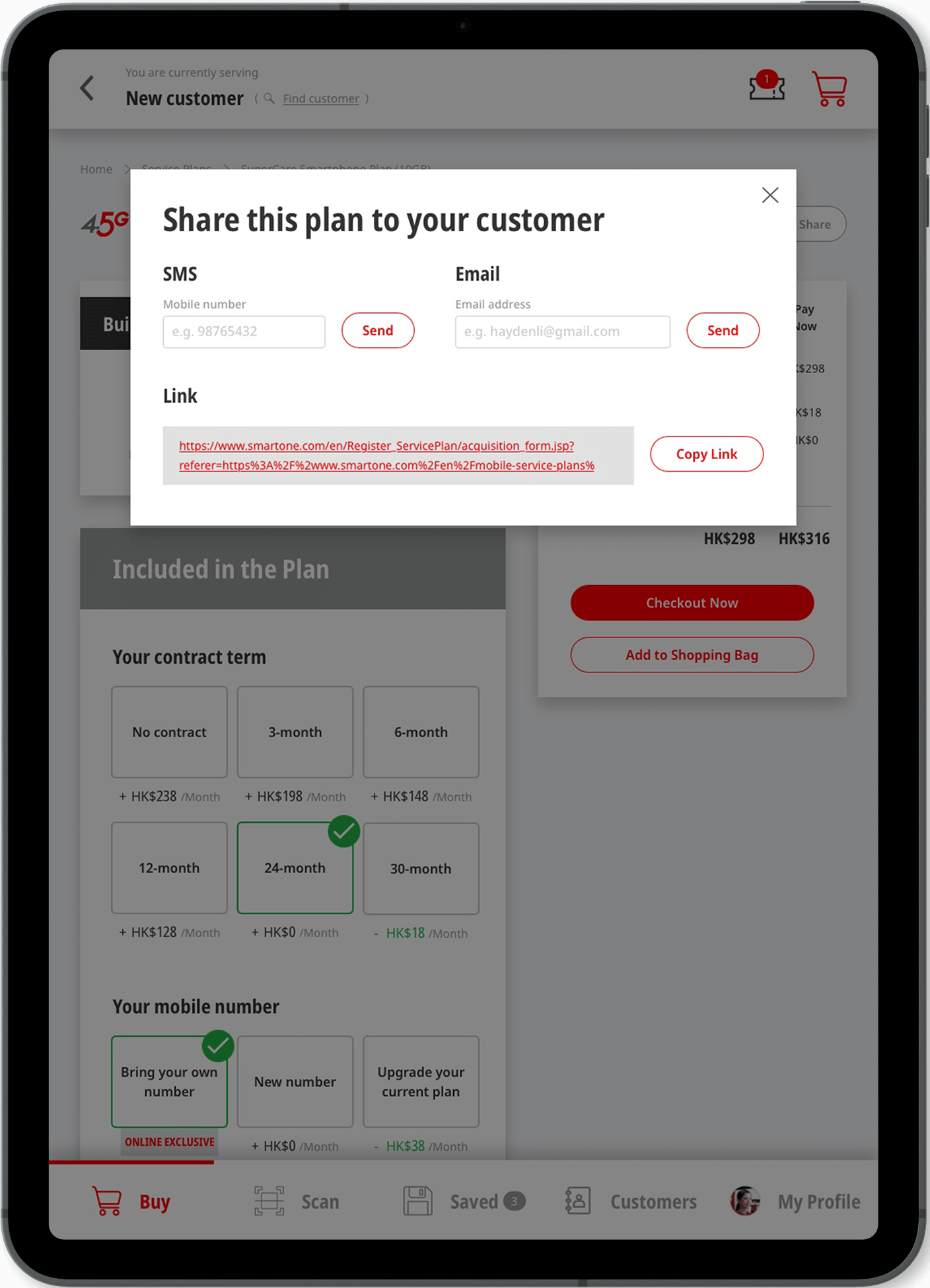

Keeping track of sales lead
After sharing the saved progress to customers, salespeople could keep track of the status. The system encouraged salespeople to follow up in case the progress remained slow or unmoved. Salespeople would get their share of commission when the deal was closed at the end. In this way, salespeople would not complain about the missing commission diverted to other channels.
2 systems, same layout, same department
The 2 systems shown above were to be developed by the same team, sharing the same layout. This could save the development time in case new products or services are launched. Most importantly, this unified sales flow could now put our customers on our radar all along.
What’s next?
The new sales flow was presented to the management of other divisions in Janauary 2020 with positive feedback. We then set up two different task forces to continue our progress on the sales flows for other products and the system development.
A key next step was to run user testing of the sales systems with existing salespeople so that we could quickly test if the systems would be adopted for sales pitch, registration and post-sales.
A key next step was to run user testing of the sales systems with existing salespeople so that we could quickly test if the systems would be adopted for sales pitch, registration and post-sales.
Update on March 31, 2020
The project remained unfinished at the time I left SmarTone in March 2020.
